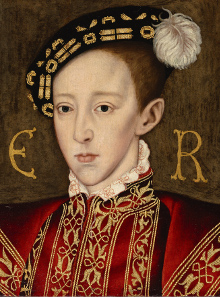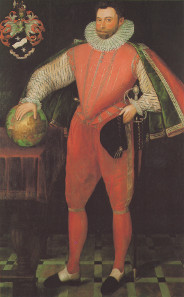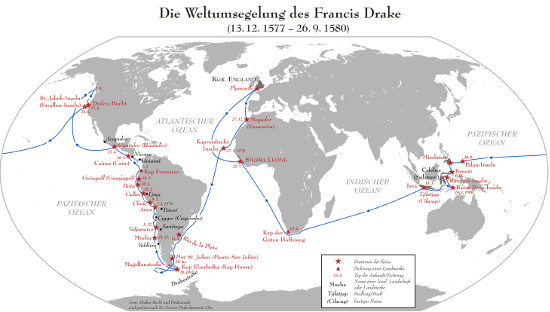April 10, 2014 – In December 2013 a metal detectorist found an English coin from the 16th century on Canada’s West Coast. A hobby archaeologist who heard about this took the find to be proof of his theory that the English had discovered Canada 200 years before the Spanish. But does the coin really prove that?
Portrait of Edward VI, around 1550.
The shilling of Edward VI, who was a son of Henry VIII, was minted during 1551 and 1553 in London. And sometime after that, someone lost it in a bay in British Columbia. That is really all the coin tells us. We simply don’t know how it got there.
So far, that is the third coin from the 16th century which has been discovered on Canada’s west coast. This is curious because it is generally believed that Canada was only discovered in 1774 by the Spanish.
Sir Francis Drake, later than 1580.
A few years ago, Samuel Bawlf, a former British Columbia cabinet minister, came forward with an original theory: that, on his journey in 1579, the English pirate and buccaneer Sir Francis Drake should have sailed much further north on the west coast of America than had previously been assumed. Allegedly, he had been searching for the legendary Northwest Passage – a connection between the Atlantic and the Pacific cutting across America’s north coast – and had thus arrived in Canada on his journey around the world between 1577 and 1580.
Francis Drake’s round the world sailing tour, 1577-1580. Source: Lencer / http://creativecommons.org/licenses/by-sa/3.0/deed.en
All that has been officially recognised up until today is that Drake sailed as far up north as California or Oregon. However, says Bawlf, the search for the Northwest Passage was top secret, which would explain the lack of records of this part of the journey. Bawlf believes that the coin finds confirm his theory.
Still, as far as we know, there is no context given for any of the three coin finds which conclusively proves that the coins were indeed lost by Englishmen in Canada at the time of Drake’s round the world sailing tour. They may equally well have gotten there later in the context of trade relations. And perhaps they simply fell out of a coin collector’s pocket when he or she was going for a swim. When one of the coins was found in the early 20th century, the location of the find was a popular bathing spot.
The three coins are certainly not a reason to rewrite Canada’s history. And even less so for reconsidering the agreements which legally define the borders between Canada and the US – which are based on the borders of the old colonies – as the British Daily Mail has over-enthusiastically predicted.
The Daily Mail’s article has more details and, as usual, many pictures on the topic.
Skeptical Humanities offers a slightly more matter-of-fact account of the story.







